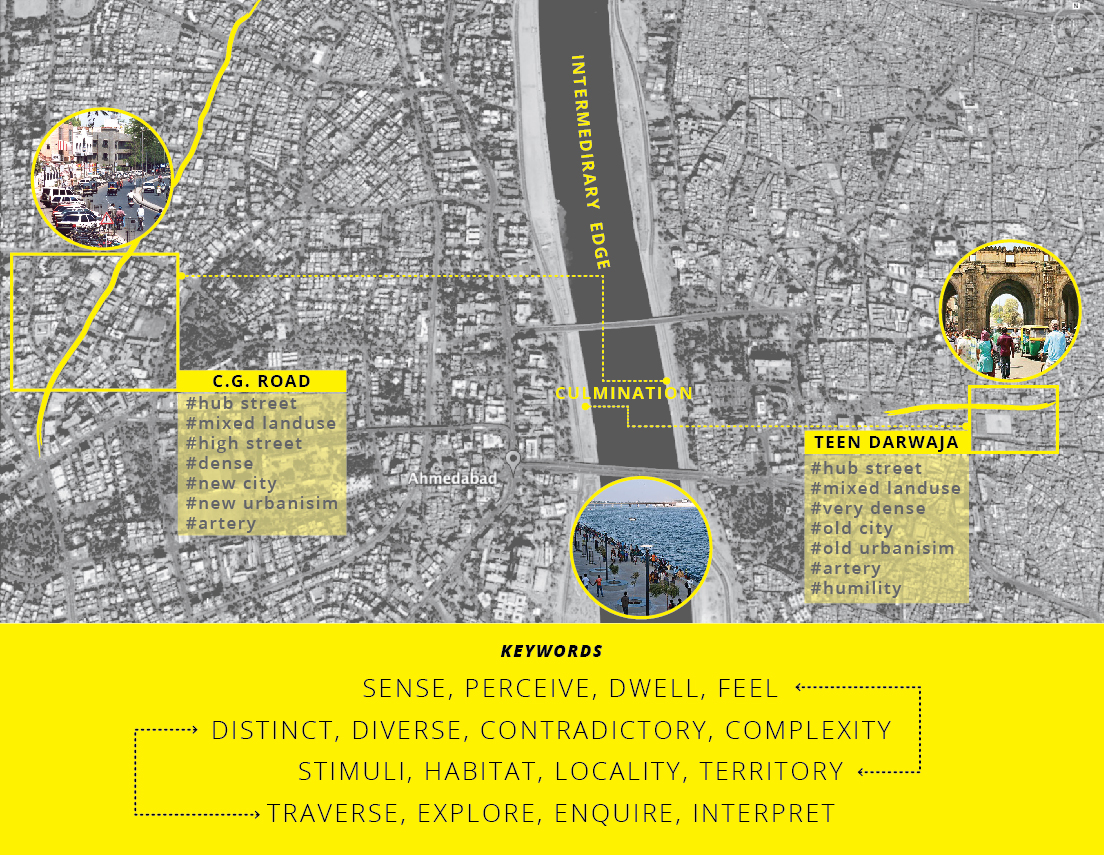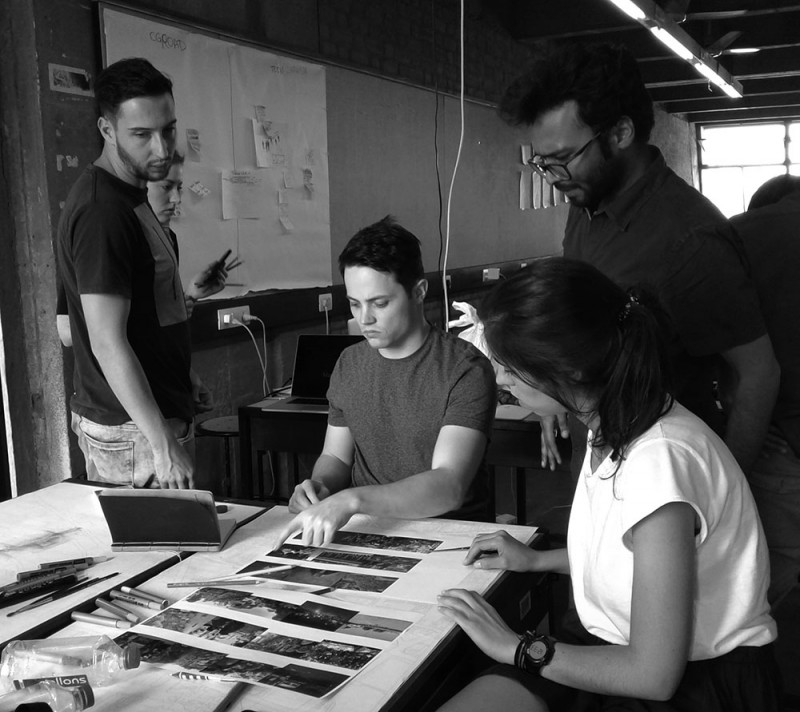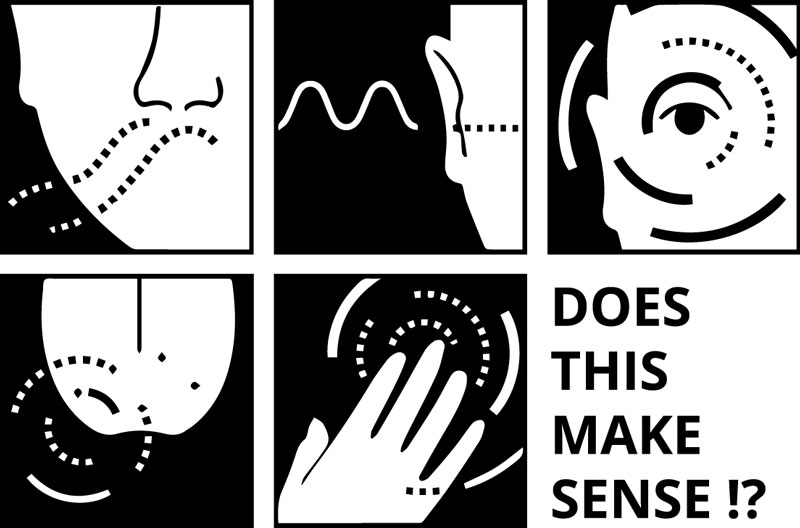Icons by : Stephanie Hoffman, Visual & UI Designer (http://www.stephhoffman.com/portfolio.html?g=s)
Guest Facilitator: Siddhartha Chatterjee, Seechange
-An Enquiry Into The Sensory Perception Of Habitat
‘’Architecture is essentially an extension of nature into the man-made realm, providing the ground for perception and the horizon to experience and understand the world. It is not an isolated and self-sufficient artifact. It directs our attention and existential experience to wider horizons.’’(Juhani Pallasmaa, 2005:28)
The primary ways in which we perceive anything within our surroundings are our senses of tactility, taste, vision, olfaction and aurality. It could be our immediate spaces, or spaces that we aren’t physically present in. We perceive and understand the meaning of spaces by modulating the interplay of these senses. We have experiences, and eventually build memories, through the processing of this fluid sensorium. Yet somehow we forget that we continually use our senses to apprehend and build our world around us. This becomes so habitually engrained that it happens subconsciously.
The built environment conditions our living: affecting our experiences, feelings, memories, and ultimately the decisions we make. Functionality isn’t the only determinant of built form - comfort and sensory pleasure need to be more involved in building experience.
Foregrounding these concerns, this workshop aims to examine the critical role that our senses play in re/structuring our environments and their significance.
This sensorial enquiry will investigate two distinctive spaces, cut from the broader cross-section of the city. While alike in their function and land-use, sharing a similar set of cultural and commercial imperatives, they are on either side of the intermediary edge: the Sabarmati river, which is contained by the riverfront’s high walls. CG Road and Teen Darwaza reflect two periods of the cities growth. Each is an active urban space, serving a similarly diverse set of functions, yet both are perceived very differently.
Testimony to the old and new existing simultaneously, these complex environments will be explored through a range of multi-sensory exercises.
The idea is to work between understanding habits and habitats, to look closer at the mutually constitutive nature of the intangible and the tangible.
KEY QUESTIONS LOCAL SCALE
What similarities and contradictions characterise these two sensorially distinctive places?
What role does the river play as an intermediary edge, divider and/or connector within the city?
Could a multi-sensorial appreciation of these two places/spaces help us reimagine their ‘habitability’?
KEY QUESTIONS LARGER SCALE
How do our senses re/define habitable space?
How can we create a practical sensory tool-kit to improve environments with humility and empathy? Can these be integrated within a design process?

Image Credit : Image has been reconstructed with resources available over the internet and google maps.
The focus is on understanding the urban built environment of Ahmedabad as a space of social practices, in order to humanise the overwhelming realities of such cities.
With influxes of people and constant urban expansion, it becomes more imperative to move beyond older technical modes of action, and activate more humanising, techno social aspects of city planning. Can the process of integrating the micro-narratives of dwellers and local communities be an important key to understanding the diverging, often contradictory forces and processes by which a city grows into a megacity?
Outcomes of the workshop could take place at the intermediary edge of the river - and its interactions with one of the biggest developmental projects in the city: the riverfront. The outcome could be an installation on the riverfront (situated along the Cross-section) inviting further public engagement in the pursuit of answers.
The workshop is planned with an open format that includes site-visits, discussion, studio-based exercises - opening up further possibilities for outcomes.


 Image Credit : Image has been reconstructed with resources available over the internet and google maps.
The focus is on understanding the urban built environment of Ahmedabad as a space of social practices, in order to humanise the overwhelming realities of such cities.
With influxes of people and constant urban expansion, it becomes more imperative to move beyond older technical modes of action, and activate more humanising, techno social aspects of city planning. Can the process of integrating the micro-narratives of dwellers and local communities be an important key to understanding the diverging, often contradictory forces and processes by which a city grows into a megacity?
Outcomes of the workshop could take place at the intermediary edge of the river - and its interactions with one of the biggest developmental projects in the city: the riverfront. The outcome could be an installation on the riverfront (situated along the Cross-section) inviting further public engagement in the pursuit of answers.
The workshop is planned with an open format that includes site-visits, discussion, studio-based exercises - opening up further possibilities for outcomes.
Image Credit : Image has been reconstructed with resources available over the internet and google maps.
The focus is on understanding the urban built environment of Ahmedabad as a space of social practices, in order to humanise the overwhelming realities of such cities.
With influxes of people and constant urban expansion, it becomes more imperative to move beyond older technical modes of action, and activate more humanising, techno social aspects of city planning. Can the process of integrating the micro-narratives of dwellers and local communities be an important key to understanding the diverging, often contradictory forces and processes by which a city grows into a megacity?
Outcomes of the workshop could take place at the intermediary edge of the river - and its interactions with one of the biggest developmental projects in the city: the riverfront. The outcome could be an installation on the riverfront (situated along the Cross-section) inviting further public engagement in the pursuit of answers.
The workshop is planned with an open format that includes site-visits, discussion, studio-based exercises - opening up further possibilities for outcomes.

